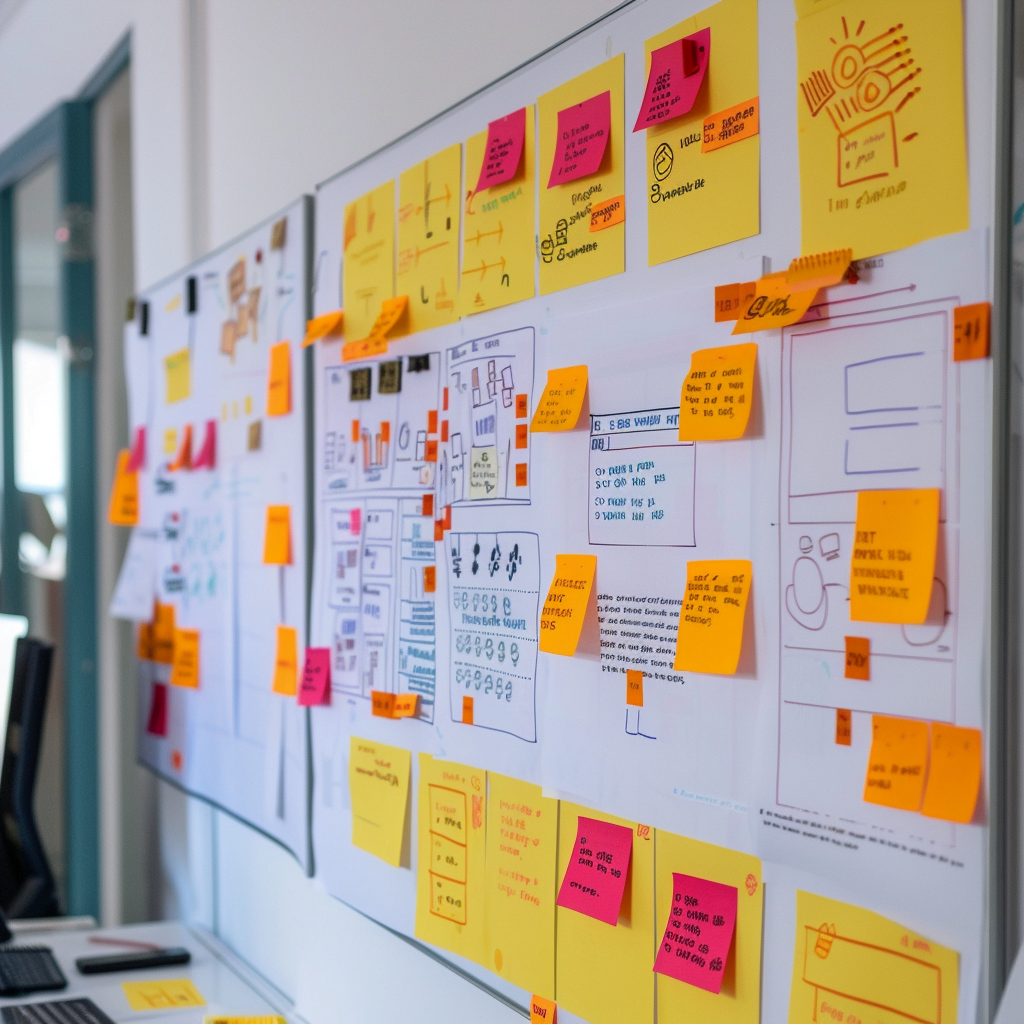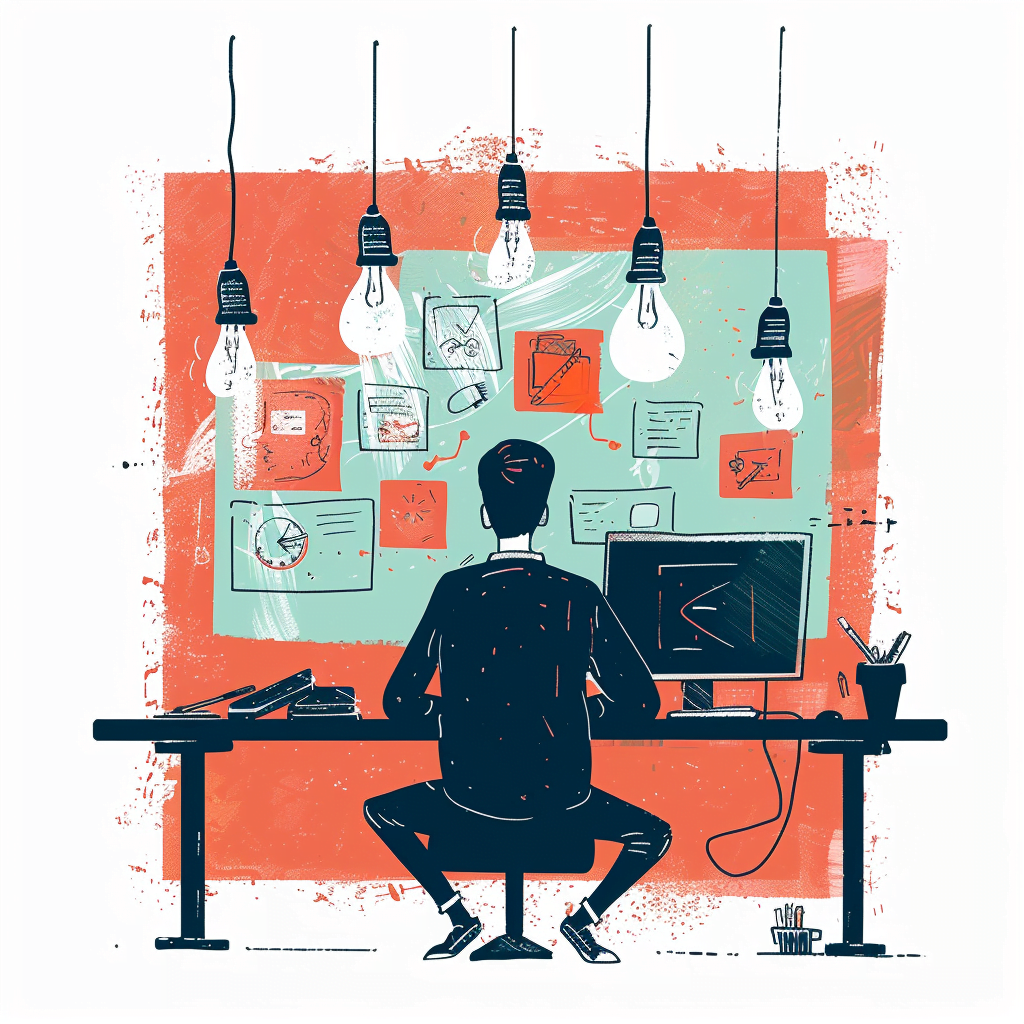No products in the cart.
5 Steps of Design Thinking for Flexible Packaging
What is the design thinking process?
Design thinking is a design process for creative problem solving that helps design teams and product developers move past the 'good ideas' of their initial brainstorming session and towards a final design that actually solves problems. In the design thinking process, design teams use design thinking frameworks to identify problems and pain points, challenge their assumptions, and create solutions to test during the testing phase.
At its core, this design thinking framework takes a user centric approach vs rapid prototyping, so their product is solving complex problems in a human centered manner. Put simply, it is one of the best ways to find the very best solutions for your customers.
Sometimes referred to as "design thinking workshops", the design team often gathers together to work through the five stages of this specific creative process. The design thinking process is an iterative process that's divided into five phases: empathize, define, ideate, prototype, and test. In this blog, we'll walk you through the steps of this popular design thinking model, and how each phase works to find creative solutions to as many ideas as possible.

Phase 1: Empathize
During the first stage of this linear process, marketers try to understand consumer needs, attitudes, and aspirations. During the empathize stage, stakeholders in the company must put aside their assumptions and stereotypes, and gather real insights that are relevant to their product. Standard activities that occur during the first stages of design thinking include observations and qualitative interviews.
Observations
During this activity, stakeholders and marketing managers go where their users go and see firsthand what they are about. Considered a form of user research, the idea here is to observe real users and come up with creative ideas on how to best solve their problems.
Qualitative interviews
Here, stakeholders will hold one-on-one interviews with their users to gather their thoughts and opinions on the topic in question. Since the five steps of design thinking is a human centered design process, it only makes sense that real user feedback contributes to business success.
Phase 2: Define
Once you've completed the first stage, it's time to move onto the second stage of the design process: the define stage. During the define stage, you'll define the user problem you want to solve with your creative solutions. First, gather all of the insights and new ideas you've compiled during the first stage and look for themes, patterns, or other findings.
By this point, you should have a deeper understanding of what your target users are looking for, including their pain points and diverse ideas. Use clustering, themes, and problem statements to identify the most painful issues faced by your customers and how you want to solve them moving forward.


Phase 3: Ideate
The third stage is the ideation phase. During this phase, you collect as many potential solutions and innovative ideas as possible, so your team can work through them and decide which ones they want to test during the usability testing phase. Some common activities that occur during the ideation stage of the design process include brainstorming and the "worst possible idea" activity.
Brainstorming
This is an incredibly important part of the ideation phase. During this step, the design team considers what they learned in the previous stage. They take those findings and bring their unique perspectives, experiences, and insights to the table to brainstorm some potential solutions. Ideally, you've invited individuals of different ages, economic backgrounds, and racial demographics to the brainstorming session.
"Worst possible idea"
This might sound counterintuitive, but coming up with the worst possible solutions or scenarios is one of the key steps of the design thinking process. The ideation phase is as much about finding a solution to complex problems as it is uncovering why certain ideas are the "worst." Simply put, you cannot solve complex problems without the entire team using creative problem solving to identify additional problems.
Phase 4: Prototype
Once you've interviewed real users and completed the previous stages, it's time to move onto the next step of this iterative process: the prototyping stage. By this point, you should have already taken the time to generate ideas with your entire time, so now it's time to prototype. Typical activities during these stages of design thinking include creating a creative vision board, holding inspirational rapid-sketch sessions, and gathering your design thinkers together for design sprints.


Phase 5: Test
Once you've gone through the empathize, define, ideate, prototype phases, it's time for the final phase of the design thinking process: user testing. By this point, you should have a user centered design that solves the problems of real users. Now, it's time to put them to the test during this final stage. Although it's a linear process and all the phases are important, user testing is one of the key steps and this stage of the design process should not be rushed.
Observational testing phase
During this exercise, you observe your target users interacting with your user centered design. The goal here isn't just to confirm if your design works as intended, but to gain a deeper understanding of the user centric behaviors of your customer. Your design thinkers should look for any problems or issues with how they interact with your product, as you may need to focus on producing scaled down versions if real users are having difficulty interacting with your product.
Iterative testing phase
Once you've observed real users interacting with your product, it's time to make improves and test again. Think about what your entire team learned during the empathize stage and the ideation stage (+ the other five stages of the design process), and consider user feedback you may have received from your target users during all the five stages. Whether the end result is scaled down versions of your initial idea or something that requires minimal effort to open or close, it's important to take a solutions based approach to the iterative testing phase.
CarePac: Your partner in innovative packaging designs
Now that you understand the empathize, define, ideate, prototype phases and how they impact the testing phase, you may be wondering what's next? Once you've used the design thinking process and user feedback to come up with innovative solutions to your customers problems, you'll need to find a partner that can package your product.
Well, you're in luck. With decades of experience in the packaging industry, we're extremely familiar with the design thinking process. In fact, we ideate, prototype, and test all our own products using the design thinking process. Contact us today to learn at which stage of the design thinking process we should be included in!
Design thinking process FAQs
Here are some common questions we receive about this particular design thinking methodology:
What are the five stages of design thinking?
The five stages of the design thinking process are empathize, define, ideate, prototype, and test. The design process must be completed in order since it's an iterative process where each phase builds upon the previous stage.
What are the benefits of design thinking?
The benefits of using the design thinking process include increased innovation among design teams, enhanced solving of complex problems, and using user research to truly understand the needs of your customers. If you're completing the ideate, prototype, and test phases appropriately, you'll be taking a solution based approach to your customers problems and fixing them in human centric ways.
Why is design thinking so effective?
The design thinking process is so effective because it uses user feedback and user testing to find innovative solutions to complex problems. Since it's a user centric approach that's focused inherently on finding new concepts to ideate, prototype, and test, many feel that it's an incredibly effective way to generate new ideas that truly solve problems.
What is the define phase of the design thinking process?
The define phase is the second stage of the design thinking process. Since the design thinking process is a linear process, you simply cannot skip one phase before going onto the next. It's goal is to aid with problem solving and find alternative solutions to common problems.

